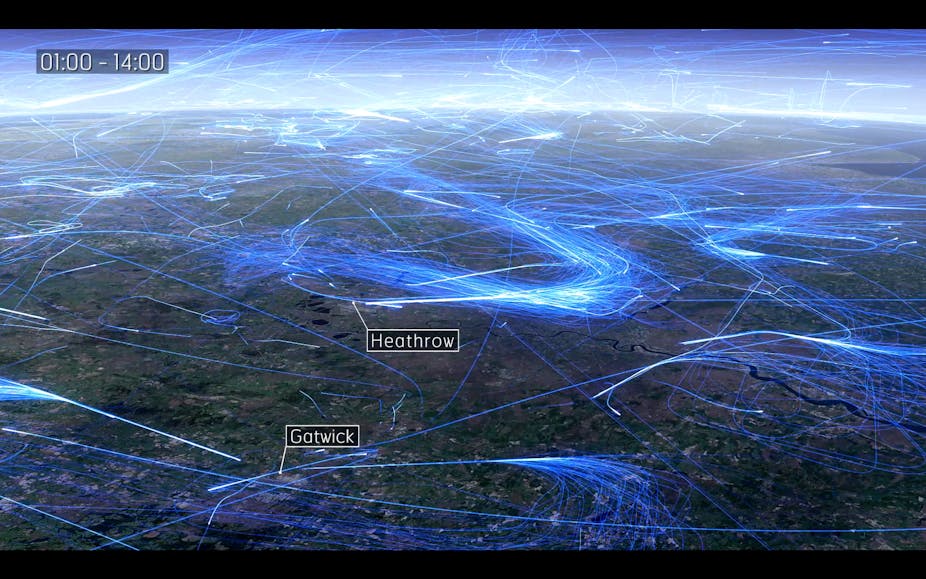Unlike the looming election, the great British airport debate has seemingly become a two horse race. Should Gatwick gain a second runway or Heathrow a third? In truth, either solution will still put Britain’s hard-won market leadership at risk.
Clearly more runway space will mean more annoying noise for local residents and possibly more pollution. But aircraft are getting quieter and cleaner as the industry responds to important environmental concerns – there is even a solar powered plane circumnavigating the globe.
The radical solution is to ban non-essential flying, a position even the most ardent tree huggers see as untenable. The 70s Costa del Sol charters and the low cost carriers of the noughties have democratised air travel to such an extent it is hard to see it being limited by anything but global energy pricing and ratcheting taxation.
World leading pioneers
The UK has held a key role in aviation’s hundred-year history, remember Sir Frank Whittle developed the first jet engines in Farnborough. Gatwick, usurping Croydon’s grassy aerodrome as an early out-of-city-centre airport, introduced the first flexible piers, using canvas tunnels in a circular, beehive terminal, and boasted the original glass-sided linear terminal building with jetways. Airlines operated by BOAC and BEA – the companies that merged to form British Airways in 1974 – delivered mail and civil servants to the colonies, helping to secure a crucial role for Britain in global trade that survives to this day. Part of London’s intangible attractiveness hails from its competitive network of direct flights to many points around the world.

Lobbying groups such as Taking Britain Further, London First Let Britain Fly and Back Heathrow, support runway expansion. They cite jobs, economic growth and our status on the global stage as the prime factors. Contrary positions are held by Plane Stupid, Hacan Clear Skies, NoTRAG and environmental groups such as Greenpeace, Friends of the Earth and WWF. Detractors are concerned about greenhouse gas emissions, property destruction, noise and air pollution and the existence of lower impact alternatives.
Heathrow is the world’s second busiest international airport behind Dubai, with Gatwick coming in at 12th, impressive given its single runway. Other European competitors, such as Paris and Frankfurt boast four runways apiece and Amsterdam a mighty six. Heathrow, through lack of capacity, has seen its footprint shrink, losing nearly two-thirds of its UK domestic network from 17 to six, as operators concentrate on flying larger aircraft on more profitable, denser routes.
Perhaps surprisingly, Gatwick, now under independent management, has flourished and boasts the UK’s widest range of destinations. Without expansion it is easy to see Heathrow becoming south east England’s airport, as the rest of the country is better served by high-frequency global connections accessed via the major European hubs. It is hard to envision even a two-runway Gatwick becoming a longhaul heavy hitter.
A post-election problem
What is clear is that the issue is deeply political. While Gatwick’s residential neighbours voted Tory in the 2010 election, Heathrow flight paths cover constituencies held by the three larger parties (and the Queen). Only following the election in 2001 did Heathrow Terminal 5 get the go ahead. Eventually opened in 2008, the decision had been in planning since 1985. Transport Secretary Stephen Byers told MPs:
Terminal 5 is a lesson in how not to plan major infrastructure projects that are in the public interest.

The Airports Commission believes there is a need for an additional runway in the south east by 2030. But the real answer is that both airstrips are needed, and probably another at Stansted too. Politically, this kind of honesty is toxic for politicians of all colours, hence the delay in the commission’s toothless recommendation until immediately after the election, five long years before the next one. Any recommendation is non-binding and if perceived to be too risky can be kicked into the long grass awaiting another commission. President of the Confederation of British Industry, Mike Rake, believes it’s a no-brainer: the Heathrow third runway should be built immediately and a second added at Gatwick.
Tough call
The split ownership of the south east’s larger airports can only help drive more open and competitive evaluation of the choices. Gatwick Obviously’s campaign is crisp, fresh and underpins a reinvigorated vision for the nation’s often neglected second airport. Gatwick claims its expansion would be quicker, cheaper and face fewer environmental obstacles, helped by its more rural Sussex hinterland.
However, easyJet, Gatwick’s second largest airline, votes for Heathrow expansion. CEO Carolyn McCall states: “Heathrow is in the best interests of passengers as it has the greatest demand.”
Unfortunately, the electoral stasis created by powerful pressure groups who want to champion their agendas is not helpful here. Willie Walsh, Chief Executive of British Airway’s holding company, believes Britain’s politicans lack the character required to approve Heathrow’s third runway.
Businesses seem to favour a third Heathrow runway as the optimal expansion option, however Gatwick benefits from fewer obstacles. I suspect the least worst choice may prevail over the optimal, after all it is always going to be a political, rather than a rational economic decision, and businesses do not get a vote.
We may have a five-year window to push through difficult – even unpopular – decisions, but it won’t have escaped anyone’s notice that a government of coalition and compromises is very likely to be in place after May 7. And this will only make the required bold political leadership harder.

